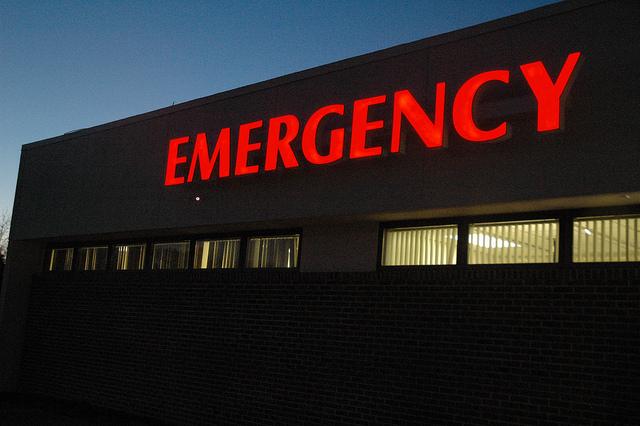 It’s now commonplace for terrorists to use industrially available chemical explosives like ammonium nitrate or everyday technology like mobile phones to detonate improvised explosive devices. In a recent op-ed in The Australian with my colleague Jacinta Carroll, I looked at the ‘Improvised Explosive Device Guidelines For Places Of Mass Gathering’ guidelines issued last month by the Australia–New Zealand Counter-Terrorism Committee. The document rightly notes that:
It’s now commonplace for terrorists to use industrially available chemical explosives like ammonium nitrate or everyday technology like mobile phones to detonate improvised explosive devices. In a recent op-ed in The Australian with my colleague Jacinta Carroll, I looked at the ‘Improvised Explosive Device Guidelines For Places Of Mass Gathering’ guidelines issued last month by the Australia–New Zealand Counter-Terrorism Committee. The document rightly notes that:
‘Terrorist or insurgent attacks using explosives occur regularly around the world. Terrorists favour explosives because of their proven ability to inflict mass casualties, cause fear and disruption in the community and attract media interest. Explosives are also generally within the financial and technical capabilities of terrorists and IEDs can be assembled with relative ease and used remotely’.
The guidelines provide general guidance to those operating places of mass gathering—such as shopping centres, sporting arenas, theatres and railway stations—in terms of emergency service requirements and security principles. The document provides useful guidance on detecting suspicious activity.
One of the weaknesses of the guidelines, however, is its treatment of healthcare issues. There’s no mention of post-blast planning and response, including the fact that the site of such an attack would be a crime scene, especially if injuries have occurred. In a post-blast incident there’d also be implications for immediate first aid and rescue before emergency medical services arrive.
The guidelines refer to ‘injuries’ and ‘people hurt’ but not that we’re likely to see multiple fatalities and a correspondingly larger number of casualties in a terrorist bombing in one of our major cities. There’s no discussion in the document of longer-term health issues: not all casualties will be immediately apparent and there’ll be a need to record those who felt the blast effects for medical observation and monitoring.
There’s no discussion either of on the scene triage or on how venue mangers might work with emergency medical services to transfer the injured to definitive care.
It’s not at all clear if a workable plan for that situation in Australia has been tested for large numbers of seriously injured. And as I’ve pointed out before (PDF), we lack available air assets and retrieval teams across Australia that would be able to provide support and respond to mass casualty events. The recent Defence White paper does, however, note that the ADF will acquire enhanced aero-medical evacuation capabilities (Para 4.94).
France’s health response after the recent Paris bombings was very good: many of the lesser injured patients went to more peripheral hospitals and only the more seriously injured ones went to the major disaster hospitals.
The fact is that we don’t devote enough attention to the healthcare preparedness aspects of terrorism—the medical issues related to terror attacks can be understood collectively as ‘terror medicine’—or to mass casualties as result of a catastrophic natural disaster.
The Director-General of Emergency Management Australia, Mark Crosweller, recently noted at the launch of ASPI’s Risk & Resilience program that when it comes to natural disasters we don’t do enough to prep for the ‘Big One’. EMA’s leader pointed out that catastrophic events are complex and intense and we need to close the gap of surprise and be able to ‘imagine and act when the time comes’.
Mark also pointed out that we don’t:
‘spend enough time looking at the potentiality of consequence. I think we look very much at before an event and try to risk manage and try to bring the risk down, but we don’t look enough at what the manifest consequence may well look like and turn our minds to how we are going to manage that when it happens.’
Mark’s comments are highly relevant in the context of healthcare preparedness for both man-made and natural disasters.
He’s absolutely right that we need to change our approach to residual risk by understanding that rarity doesn’t diminish consequence. There’s very little ‘no-notice’ training going on in Australian hospitals to prepare for mass casualties.
Several years ago, the Australasian Trauma Society and others—most notably Dr John Graham, the former chairman of the medical staff council at Sydney Hospital—argued that that the Commonwealth government should fund, with the states, a single ‘disaster prepared’ hospital in each state to prepare for mass casualties. That didn’t occur.
There’s been no real action to address the findings several years ago of a major study in the Medical Journal of Australia of the surge capacity for people in emergencies in Australasian hospitals. It predicted that all hospitals in Australasia would be quickly overwhelmed in that 60–80% of seriously injured patients wouldn’t have immediate access to operating theatres, and that there would be similar lack of access to ICU beds for critically injured and to x-Ray facilities for less critically injured patients. There’s been no similar survey to refute these findings.
As a first step to get more focus on this issue, it’d be useful for those responsible for counter-terrorism and catastrophic disaster planning to engage those in our health system who understand what’s required to manage a mass casualty event. A nation-wide desktop audit of what physical facilities are available would also be a good start: we’d then be able to assess what actual preparedness is possible. It wouldn’t be that hard.
But it would require some goodwill and cooperation between the Department of Defence and the health departments of the Commonwealth and State governments.